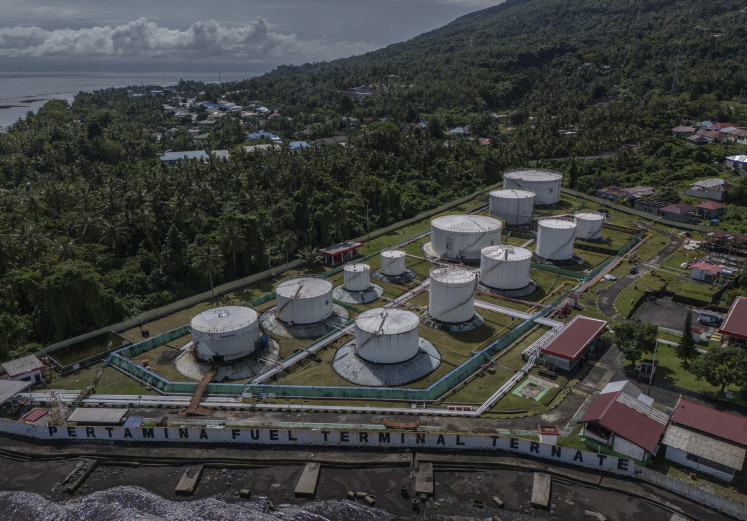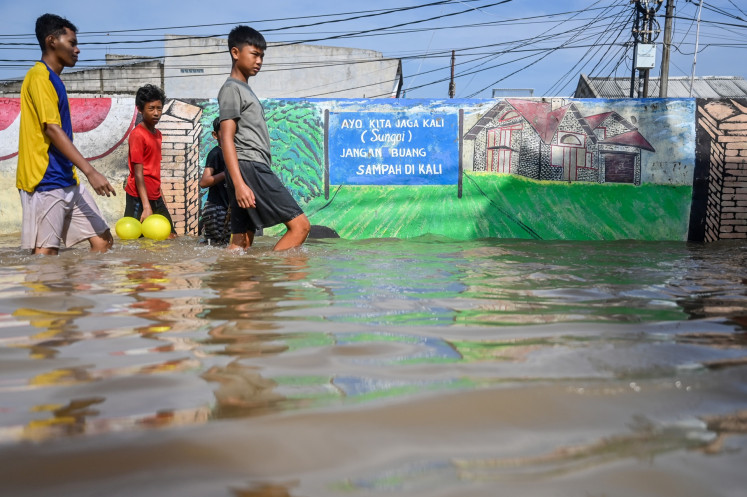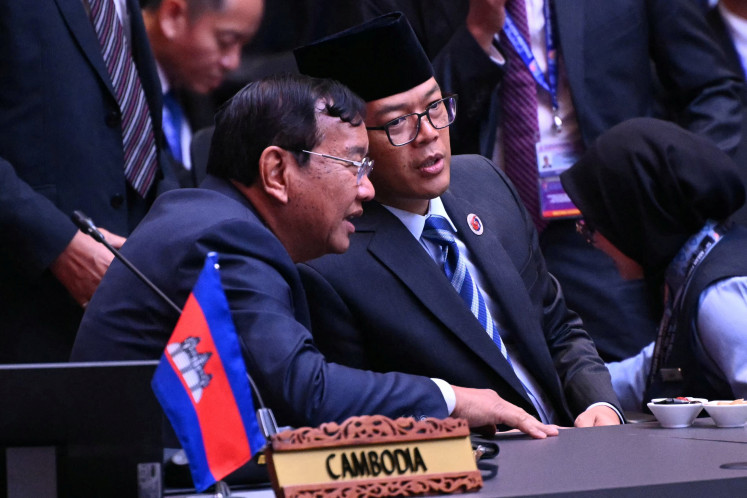Popular Reads
Top Results
Can't find what you're looking for?
View all search resultsPopular Reads
Top Results
Can't find what you're looking for?
View all search resultsWaiting for comfortable airports in Indonesia
This is the third part in a series on problems and opportunities for Indonesian airports
Change text size
Gift Premium Articles
to Anyone
This is the third part in a series on problems and opportunities for Indonesian airports.
Those who often visit and go through airports in Indonesia may have concluded that the airports are crowded and overloaded.
You may experience long queues to get in to the airports, many difficulties to find a parking lot or take safe public transport and in most cases have to wait for 30 minutes for luggage while the flight only lasts about 45 minutes.
Indeed the airline industry in Indonesia has grown significantly in the last five years. The Indonesia National Carrier Association (INACA) recorded that in 2009 there were 43.8 million air passengers compared to 37.4 million in 2008, an increase of 17 percent.
Indonesia was also one Asia Pacific country that recorded significant growth in the airline industry last year while airlines in other parts of the world suffered huge losses due to the global economic crisis.
No wonder, the International Air Transport Asociation (IATA) reported that Asia Pacific was expected to be the most profitable airline region in 2010, netting US$2.2 billion in profits, higher than the $1.9 billion expected in North America.
“The good news is Indonesia is part of Asia Pacific,” IATA director general and CEO Giovanni Bisignani said in Jakarta recently.
Although Indonesian airlines are predicted to perform even better this year, it doesn’t mean Indonesian airports are ready for such massive growth.
“We have to admit that Indonesian airports are still far from [up to] standard. That is why IATA said the Soekarno-Hatta International Airport is one of the three worst airports in Asia Pacific,” aviation observer Dudi Sudibyo told The Jakarta Post on Monday.
Bayu Sutanto, chairman of INACA’s non-scheduled flight division blamed this on slow infrastructure growth, failing to accommodate the increased growth in aviation.
“The growth of [Indonesian] airport infrastructure cannot cope with that of passengers and airlines. That is why you can see many airports are so crowded,” Bayu said recently.
For example, Terminals 1 and 2 at Soekarno-Hatta airport are already overloaded. Both terminals have to serve far more passengers than planned for in their initial design.
“The airport was designed to serve 22 million passengers annually but now there are 34 to 36 million passengers every year,” Bayu said.
He said that it was easier to create an airline rather than to improve airport infrastructure as the latter required huge budgets and much time.
“You just need less than a year to set up an airline company. Just buy five aircraft and process your flight permit. However, to boost and improve airport infrastructure needs a long time, and off course huge budget,” he said.
INACA data shows that currently Indonesia has 210 airports across the country. State airport operators PT Angkasa Pura I and PT Angkasa Pura II manage 13 and 12 airports respectively, while the rest are managed by the Transportation Ministry.
“I think airports that are managed by Angkasa Pura are in better condition than the government-run airports both for their facilities and their management,” Bayu said.
Airports in Indonesia are commonly thought to have failed to provided convenient services for passengers or airlines.
“If you visit an airport in Indonesia, for instance Soekarno-Hatta, you will see the airport looks so dirty, especially the toilets,” Bayu said
“You can also find many traders, motorcycle taxi drivers, and ticket touts. Airport operators should not allow them inside the premises.”
Another aviation observer, Alvin Lie, agreed that Indonesian airports need to improve their services.
He said airports should provide their passengers and visitors, with among other things, easy-to-access and safe public transport and sufficient parking lots.
“Visitors using private cars sometimes have to pay illegal fees when they drop off or pick up passengers in addition to the official parking fees.”
Alvin, a former legislator, also criticized airport operators in their managing of passengers’ luggage.
“We don’t have standards for luggage service, for example that we will get the luggage within 10 minutes,” he said.
No wonder, in Soekarno Hatta airport, for example, the luggage will be out after 30 minutes.”
Harry Cahyono, corperate secretary of Angkasa Pura II, acknowledged that many things had to be improved in airports managed by the state firm.
“We plan to improve all airports under Angkasa Pura II including human resources and management,” he said.
He declined to mention how many airports would be improved and what facilities or which terminals to be upgraded saying the firm was still devising a master plan on these issues.
It was recently reported that Angkasa Pura II has allocated Rp 2 trillion in capital expenditure to expand several airports.
This expansion will include, for example, additional terminals in Supadjo Airport in Pontianak, Husein Sastranegara Airport in Bandung and Minangkabau Internationa lAirport in Padang. The company has allocated Rp 500 billion for terminal construction.
The company will also add more facilities in Sultan Thaha Airport in Jambi and Depati Amir Airport in Pangkal Pinang.
Harry said that Angkasa Pura II will concentrate on Soekarno-Hatta airport being the main gate for visitors to Indonesia by maximizing the usage of the newly constructed Terminal 3.
“Terminal 3 is expected to help reduce congestion at Terminals 1 and 2,” he said.
Terminal 3 was opened in April 2009 at a cost of Rp 330 billion having been under construction since 2006.
With a capacity of about 4 million passengers per year, Terminal 3 is currently used by low cost carriers Mandala Airlines and Indonesia Air Asia.
There is a long way to go to get airports in Indonesia on a par with Changi in Singapore or Charles de Gaulle in Paris in term of facilities.
Changi, for example, is not only a transportation hub but has become a shopping destination in its own right. Meanwhile, Charles de Gaulle is a good example where airport operator cooperate with major airlines in providing better services to their passengers such as in the case of Air France’s Satellite 3 with its dedicated facilities for the super jumbo Airbus A380.










